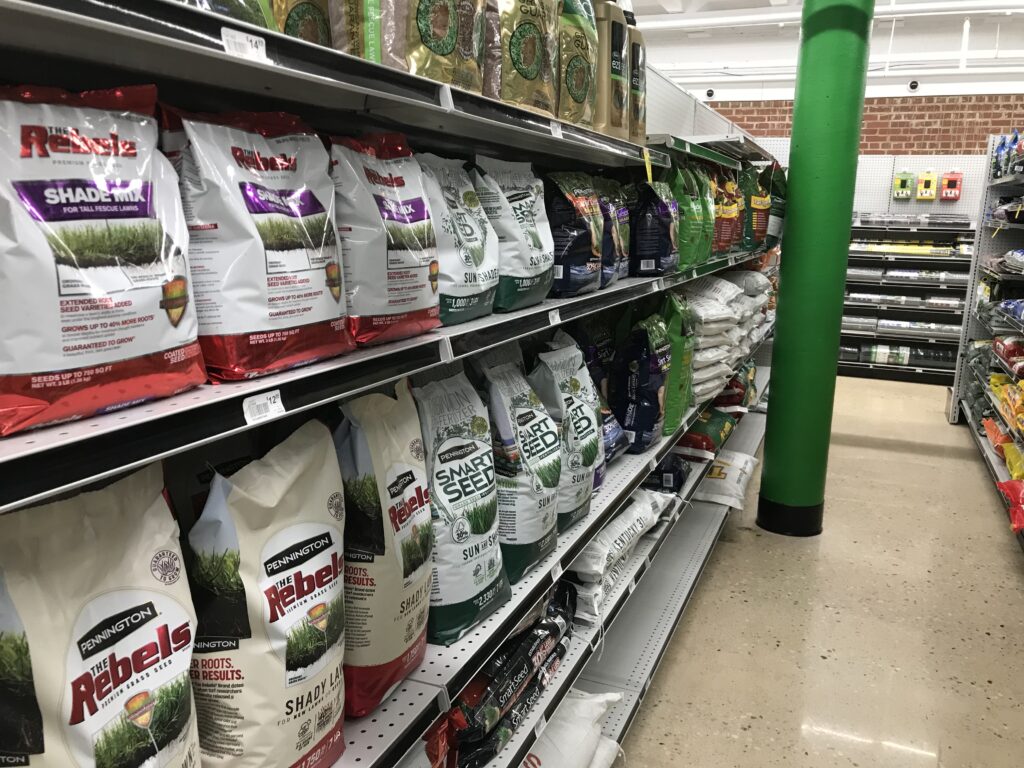It Is (Almost) Time for Fall Seeding of Cool-Season Grasses
go.ncsu.edu/readext?954245
en Español / em Português
El inglés es el idioma de control de esta página. En la medida en que haya algún conflicto entre la traducción al inglés y la traducción, el inglés prevalece.
Al hacer clic en el enlace de traducción se activa un servicio de traducción gratuito para convertir la página al español. Al igual que con cualquier traducción por Internet, la conversión no es sensible al contexto y puede que no traduzca el texto en su significado original. NC State Extension no garantiza la exactitud del texto traducido. Por favor, tenga en cuenta que algunas aplicaciones y/o servicios pueden no funcionar como se espera cuando se traducen.
Português
Inglês é o idioma de controle desta página. Na medida que haja algum conflito entre o texto original em Inglês e a tradução, o Inglês prevalece.
Ao clicar no link de tradução, um serviço gratuito de tradução será ativado para converter a página para o Português. Como em qualquer tradução pela internet, a conversão não é sensivel ao contexto e pode não ocorrer a tradução para o significado orginal. O serviço de Extensão da Carolina do Norte (NC State Extension) não garante a exatidão do texto traduzido. Por favor, observe que algumas funções ou serviços podem não funcionar como esperado após a tradução.
English
English is the controlling language of this page. To the extent there is any conflict between the English text and the translation, English controls.
Clicking on the translation link activates a free translation service to convert the page to Spanish. As with any Internet translation, the conversion is not context-sensitive and may not translate the text to its original meaning. NC State Extension does not guarantee the accuracy of the translated text. Please note that some applications and/or services may not function as expected when translated.
Collapse ▲Fall is the best time for renovation and seeding of cool-season lawns. We are entering September with above-normal temperatures and a bit on the dry side (before Hurricane Idalia). Typically, September is a month that our state’s temperatures begin to change towards a more fall-weather pattern. For example, the normal high/low temperatures for the first day of September in Raleigh are 85/67 degrees. The normal high/low temperatures for the last day of September are 77/58 degrees. At some point in October, we expect the temperatures to get too cool for optimum germination of cool-season turfgrasses. The normal high/low for Raleigh for the first and last days of October are 76/58 and 67/46 degrees, respectively.
For this reason, the target fall seeding time for the piedmont region of NC is usually between mid-September and early-October and one to two weeks earlier in the mountain region. If irrigation can be used, then seeding earlier has a few advantages, especially if Kentucky bluegrass is part of the seeding mix. Regardless of the location, I normally suggest waiting until nighttime temperatures are in the mid-60s. Wait too long and cool weather will reduce tall fescue (or Kentucky bluegrass) germination. It also helps to get the seed down before the leaves begin to fall and cover the yard.
List of top performing tall fescue, Kentucky bluegrass, and fine fescue cultivars is available on TurfFiles.
Remember that spring-established tall fescue is more susceptible to drought, heat, fungal diseases, and weed encroachment. With normal summer weather patterns, spring seeding is not likely to result in a year-long stand of healthy tall fescue. So do not delay, seed in the fall!
Before seeding core aerification is recommended to reduce compacted areas. Getting good soil to seed contact is paramount to maximize available soil moisture. A typical tall fescue seeding rate is 5 to 6 pounds of seed per 1000 square feet, if using uncoated seed. If using coated seed, adjust seeding rates up to account for the coating percentage. Germination will normally be in 5 to 10 days with soil moisture and suitable soil temperatures.
Since seeds and seedlings may be damaged by some herbicide applications, fall seeded cool-season grasses should not have any herbicides applied until it is extensively tillered.



